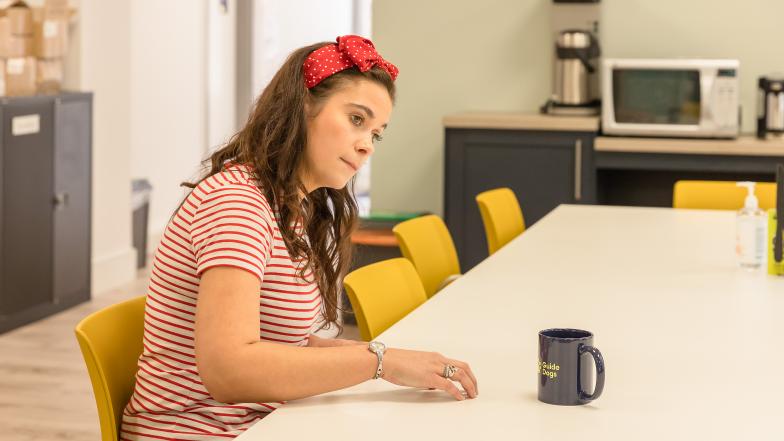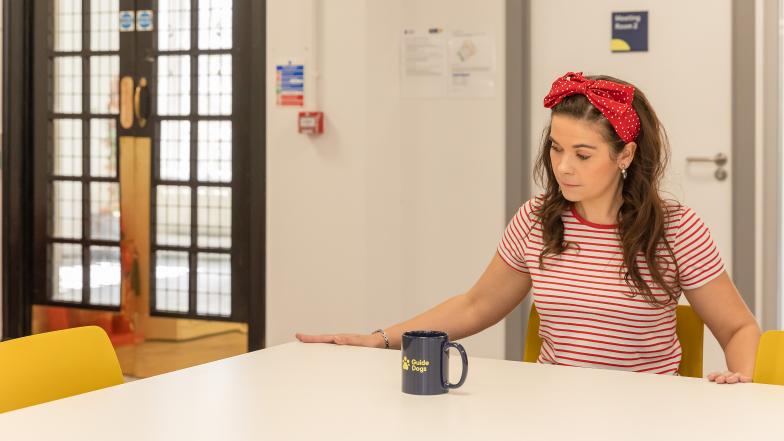Systematic search patterns
Systematic search techniques are useful and can be used in many different ways – such as to find a dropped item, when cleaning or dusting, understanding what objects are on a table to desk or when becoming familiar with a room layout.
Systematic Search Patterns
Spiral technique
- Position yourself at the centre of the table or surface you want to search.
- Start by searching the perimeter to identify the size and shape of table or surface.
- Lightly place both hands on the table or surface in front of you with your palms facing down and your fingers cupped.
- Keep your hands in contact with the table throughout the exercise.
- Keeping one hand fixed, gently make small circular actions with the other hand. Once completed return to your starting position. Repeat with the other hand.
- Once both hands have made an initial search, keep one hand at the starting position and slide the other hand one hand size up to explore the next section of the table.
- Keep working your hands upwards until you have reached the items you were looking for.
Grid pattern
- Again, position yourself at the centre of the table or surface you want to search.
- Search the perimeter to identify size and shape of table or surface.
- Place both hands immediately in front of you with your palms flat and fingers closed and straight. Lightly move one hand across the table and return to base point.
- Repeat with your other hand and return.
- Keeping one hand stationary, slide your other hand one hand size up towards the table and repeat your search outwards and return.
- Continue until you have found your items.
Locating a dropped item
- The following check list is a guide to help you locate dropped objects more easily.
- Remember to protect your upper body, particularly your face and head.
- Please be careful before bending or squatting down if you have any balance issues.
- Listen for the sounds the item makes when it falls to help you determine its general location. If the object falls on a soft surface, such as carpeting, it may not make a loud noise, but it is likely to remain close to the point where it fell. Objects that fall on harder surfaces, such as tile or wood, will make a louder sound but are also more likely to bounce or roll away from the point of impact.
- If you can determine the general location of the object, turn your body and feet pointing in that direction.
- Follow a system. Using your foot make small circular movements around your immediate area to locate item.
- Once located, either bend or squat to pick it up. Remember to use the body protection techniques.
- If you have not been able to locate your item, you may need to take a few steps forward towards the suspected location and repeat the exercise again.
- Using your hands, begin making small then progressively larger circular movements on the floor directly in front of you, then to the left and right. Move forward, continuing to use a fan-like pattern until you locate the item.
- Always remember to protect your head and face as you search.

